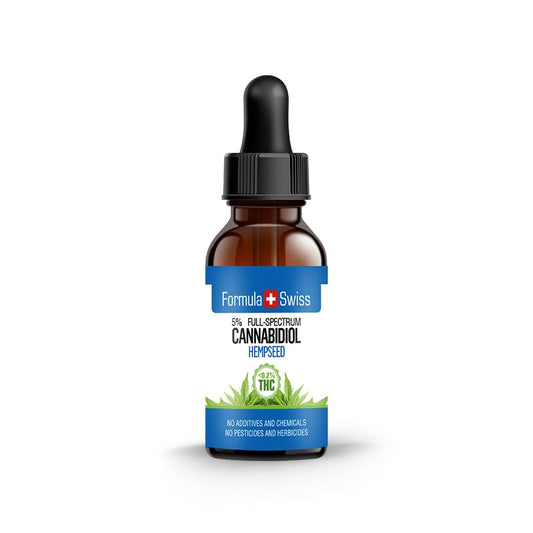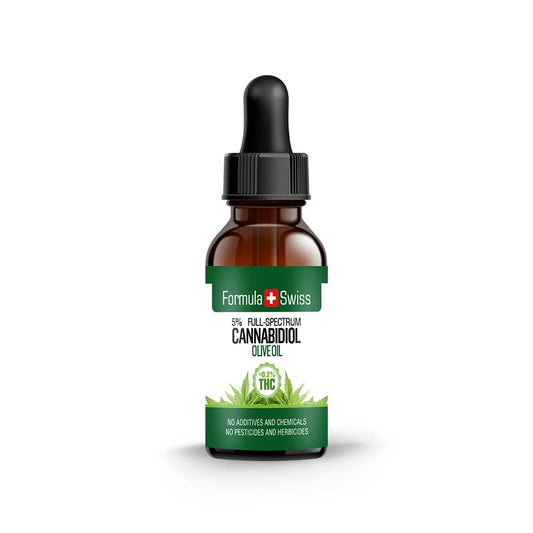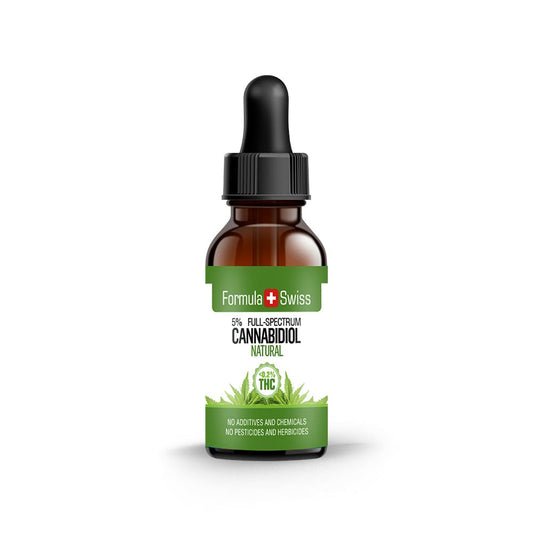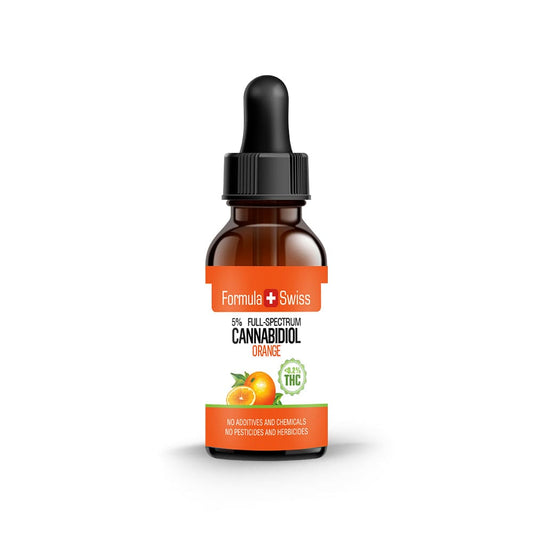The earthy aroma found in many cannabis strains can often be traced back to one terpene: myrcene. Common across a range of plants including mangoes, hops, thyme, and cannabis, myrcene has become known for its musky scent and subtle notes of spice or citrus.
During more than a decade working in the cannabis and hemp industry, I have seen how important terpenes are in shaping the character of different varieties. Myrcene, in particular, stands out for the depth it brings to a plant’s aroma and overall profile.
This article focuses on what myrcene is, where it appears in nature, and how it contributes to the scent and identity of cannabis. Drawing on research and first-hand experience, I will explain why myrcene remains one of the most recognisable elements in the cannabis industry.
Prefer watching over reading? This video covers the key points from the article:
Save up to 30% when you order your CBD oil today
Key takeaways
- Myrcene is a widely occurring terpene found in plants like cannabis, mangoes, hops, and lemongrass, contributing to their distinct aromas.
- It plays a significant role in shaping the sensory profiles of cannabis strains, especially those with indica-dominant traits.
- Myrcene forms part of the broader terpene and cannabinoid profile often referred to as the 'entourage effect,' highlighting the complexity of plant-based formulations.
- This terpene is extensively used in industries like aromatherapy, perfumery, and personal care for its musky, earthy scent with citrus or herbal notes.
- Environmental factors and breeding techniques can affect myrcene concentrations in cannabis, contributing to the plant's aromatic and chemical diversity.
This article is provided for informational purposes only and does not relate to any of the products available in our webshop. For more information, please see our full disclaimer.
Defining terpenes
Terpenes are a large group of organic hydrocarbons that share a common structure consisting of multiple isoprene units. They are produced by plants as secondary metabolites and play important roles in plant growth, development, and reproduction.
Over 20,000 different terpenes have been identified so far from various plant species, including lavender, lemon balm, rosemary, pine trees, and cannabis. The diverse array of terpenes found in plants creates a range of unique aromas and flavours that distinguish each species from one another.
For example, limonene gives lemons their characteristic citrus scent while linalool is responsible for the floral aroma of lavender flowers. These compounds not only add to the sensory experience but also serve as natural defence mechanisms against herbivores or harmful insects.
The role of terpenes in nature and everyday products
Terpenes perform important functions that extend well beyond their aromatic qualities. In plants, they contribute to natural defence systems, helping to protect against herbivores and environmental stressors.
Research published in Microbiology Spectrum has also highlighted their role in shielding plants from certain bacteria and fungi, further underlining their importance within the plant kingdom.

Each terpene has its own characteristics, which can influence how it interacts with other compounds both within and outside plant systems. For example, research has examined myrcene’s potential role in shaping interactions between plant compounds, particularly within broader terpene and cannabinoid profiles.
These interactions remain a subject of growing interest for scientists and product developers who are investigating natural ingredient synergies.
Order and enjoy up to 30% off your CBD oil purchase
Myrcene: An overview
Myrcene is a naturally occurring terpene found in a diverse range of plants, including hops, thyme, lemongrass, mangoes, and cannabis. It is especially prominent in certain cannabis varieties, particularly those with indica-dominant traits.
Recognised for its earthy, musky aroma, myrcene often carries additional hints of citrus, cloves, or herbs, contributing to the complex scent profiles of many botanical products.
Classified as a monoterpenoid—comprising two linked isoprene units—myrcene carries the systematic name 7-methyl-3-methylene-1,6-octadiene. Its molecular formula is C10H16, with a relative molecular mass of around 136.24 g/mol. Structurally, it is arranged in a chain with a six-carbon backbone and an unsaturated five-carbon tail.

Historically, plants containing high levels of myrcene have been used in cultural practices, particularly across parts of South America and Africa. Today, myrcene continues to be valued for its aromatic qualities and its role in shaping the sensory profiles of essential oils, botanical extracts and fragrance blends.
Its distinctive structure and aroma have led to its wide use in industries such as aromatherapy, perfumery and personal care, where naturally derived compounds are prized for their origin and olfactory appeal. The study of myrcene remains an active area of botanical research and product development.
In cannabis, myrcene is recognised for its influence on the plant’s overall profile, particularly through its interactions with other cannabinoids and terpenes. These interactions help define the complex aromatic and sensory qualities observed across different varieties. While research is ongoing, myrcene remains a focus of attention for its contribution to the distinctive attributes of botanical formulations.
Research into myrcene’s role across diverse applications is continuing, with current studies offering new insights into its relevance within plant-based product development.
Definition and chemical structure of myrcene
Myrcene derives its name from the Brazilian shrub, Myrcia sphaerocarpa, where it was first isolated in 1897. It has a pungent earthy aroma with hints of citrus and spice and can be found in several natural sources such as cannabis, hops, thyme, bay leaves, lemongrass, and mangoes.
The chemical structure of myrcene includes two methyl groups attached to the carbon chain near the tail end. This arrangement contributes to its distinctive aroma, often described as musky or herbal, with undertones that can range from fruity to slightly minty depending on concentration.

Common sources of myrcene in nature
Myrcene is widely distributed across various plant species, contributing to their distinct aromatic profiles. Some key sources include:
- Hops (Humulus lupulus)
- Mangoes (Mangifera indica)
- Cannabis (Cannabis sativa and Cannabis indica)
- Chamomile (Matricaria chamomilla)
The presence of myrcene in such a wide range of plants highlights its importance in shaping their aromatic character. Its influence on scent profiles continues to draw attention in fields including perfumery, aromatherapy and botanical research.
Order CBD oil now and save as much as 30%
Interaction with other cannabinoids and terpenes
One of the defining characteristics of myrcene is its role in the interaction of compounds within cannabis plants, a process often described as the entourage effect.
This concept refers to the way multiple plant-based compounds, including cannabinoids and terpenes, work together to create a combined influence that differs from the impact of each component on its own.
Myrcene interacts with cannabinoids as well as other terpenes, such as pinene and limonene, helping to shape the overall aromatic and sensory profile of particular cannabis varieties.
These interactions add to the richness and complexity of the plant’s qualities, influencing scent, flavour and sensory appeal in applications such as aromatherapy and topical formulations.
The study of myrcene’s role within this broader network of plant compounds remains an active area of scientific interest, particularly in exploring how these relationships may inform product development across different industries.
The high levels of myrcene found in certain cannabis strains
Myrcene is one of the most abundant terpenes found in cannabis, with levels that vary depending on the strain. Indica varieties often show higher concentrations of myrcene, in some cases reaching up to 60% of the terpene content by weight. In contrast, sativa strains usually contain lower levels of myrcene.

The reasons behind these differences are not yet fully understood, though environmental conditions such as temperature, humidity and soil quality are thought to play a part. Breeding techniques may also be used to adjust terpene concentrations, including that of myrcene, within specific strains.
Influence on the aroma and flavour profile of cannabis
Myrcene is characterised by an aroma often described as earthy or musky, with subtle notes of citrus or tropical fruit. This profile is commonly linked with cannabis strains that contain higher levels of myrcene. Even in smaller amounts, it can still play a role in shaping a strain’s overall fragrance, though it may be less pronounced.
Alongside its aromatic qualities, myrcene also contributes to flavour. It is sometimes noted for a slightly sweet taste with gentle hints of spice or clove.
Role in determining the effects and potency of different strains
Although further research is needed to understand exactly how terpenes interact with cannabinoids such as THC and CBD, some evidence suggests that myrcene plays a role in shaping the overall character of certain cannabis strains.
One theory proposes that high levels of myrcene may influence the permeability of cell membranes, potentially affecting how cannabinoids such as THC are absorbed. This has led to discussion around its possible role in modulating the perceived intensity or duration of a strain’s effects.
Myrcene has also been studied in relation to its sedative qualities, which are sometimes associated with the relaxing character of indica strains. Early research has examined possible analgesic properties as well, though these findings remain preliminary and require further investigation.
The future of myrcene research in cannabis
While much is still to be learned about how myrcene interacts with other compounds in cannabis, early studies indicate that it holds an important place within the plant’s complex profile.

As regulations evolve and research opportunities expand, our understanding of terpene and cannabinoid interactions is expected to grow. This will provide deeper insight into how different strains develop their distinctive qualities.
With its recognisable aroma and contribution to the sensory profile of cannabis, myrcene remains a central focus in both botanical and scientific research. Its role within this field ensures that it will continue to attract attention in future studies.
Personal perspective
Myrcene is a terpene found in a wide range of plants, including cannabis, hops and mangoes. As highlighted throughout this article, it plays an important role in shaping the aromatic and sensory qualities of these species.
In cannabis, myrcene interacts with other cannabinoids and terpenes, influencing the plant’s overall profile — a phenomenon commonly described as the entourage effect. These interactions help define the complex characteristics that distinguish different strains.
Looking ahead, there are promising opportunities for continued research into myrcene. Future studies may provide deeper insight into the mechanisms behind its interactions within plant systems and its contribution to the sensory attributes of botanical products.
Of particular interest is research examining how varying concentrations of myrcene across cannabis strains affect their overall profiles. Expanding knowledge of how terpenes like myrcene interact with cannabinoids such as THC and CBD could support the development of more refined plant-based formulations.
Although much remains to be discovered, myrcene continues to stand out as a key area of focus in scientific research, valued both for its distinctive aromatic signature and for its role in shaping the broader qualities of plant-derived products.
Don’t miss out—save up to 30% when you purchase CBD oil today
This article was one of my many expert articles about terpenes. Click here to see my other articles about terpenes, cannabinoids and cannabis.
Frequently asked questions
What is myrcene?
Myrcene is a naturally occurring monoterpene found in various plants, including cannabis, hops, lemongrass, mango, and thyme. It is best known for its earthy, musky aroma with subtle spicy and herbal undertones, and it is among the most common terpenes found in cannabis varieties.
What is myrcene believed to do?
Myrcene has been traditionally linked with a sense of calm and relaxation, particularly in the context of aromatherapy. It is also thought to play a role in the so-called “entourage effect”, a term used to describe the potential synergy between terpenes and cannabinoids such as THC and CBD.
What are the common uses of myrcene?
Myrcene is widely utilised in perfumery, aromatherapy, and cosmetic products thanks to its pleasant and distinctive scent. It is also found in various plant-based extracts and oils that are used in traditional wellness practices.
Is myrcene safe to use?
Myrcene is listed as “Generally Recognised as Safe” (GRAS) by the U.S. Food and Drug Administration (FDA) for use in food and cosmetic products. It is typically well-tolerated, although higher concentrations may cause drowsiness or mild skin irritation in some people.
What does myrcene smell and taste like?
Myrcene has an earthy, musky aroma, often complemented by hints of cloves, herbs, and fruits such as mango or grape. It contributes significantly to the characteristic scent and flavour profile of many cannabis strains.
Which plants contain myrcene besides cannabis?
In addition to cannabis, myrcene can be found in hops, lemongrass, mangoes, thyme, bay leaves, and some citrus fruits. These plants are commonly used in cooking, teas, essential oils, and natural product formulations.
Is myrcene more common in indica or sativa cannabis strains?
Myrcene is often more concentrated in indica or indica-dominant cannabis strains, which are typically associated with more grounded and mellow experiences. Nonetheless, sativa and hybrid strains may also feature notable amounts of myrcene.
Why do people choose products containing myrcene?
Myrcene-rich products are often selected for their aromatic properties, particularly by those who appreciate relaxing and earthy scents. In aromatherapy, these products are sometimes incorporated into routines designed to create a calming atmosphere.
Are there any considerations when using myrcene-rich products?
Myrcene is generally well-regarded for topical or aromatic use, but products with high concentrations—particularly those involving cannabis—may have a sedative-like effect for some individuals. It’s sensible to begin with small quantities, especially if unfamiliar with its effects.
How does myrcene interact with other compounds in cannabis?
Myrcene is believed to work in combination with other terpenes and cannabinoids, influencing the aroma, flavour, and overall sensory experience. This interaction is commonly referred to as the “entourage effect”, although the exact mechanisms are still under scientific study.






